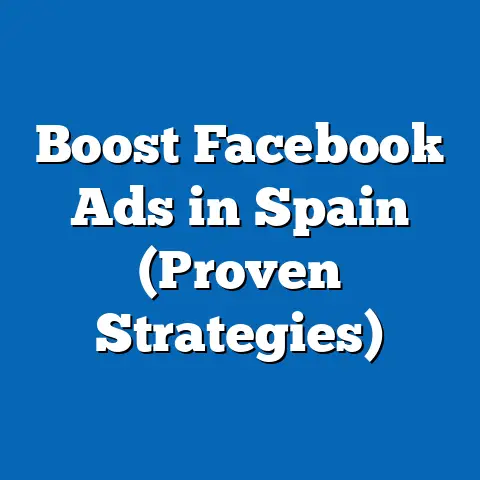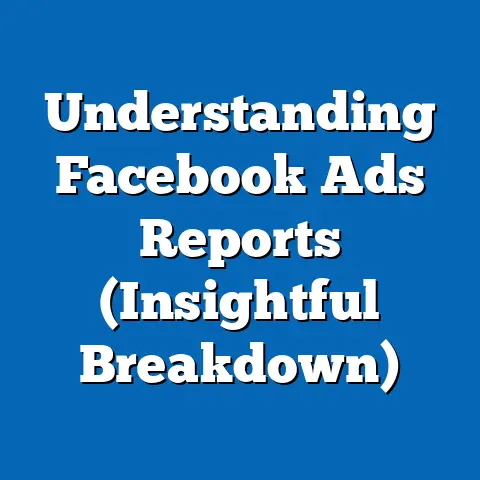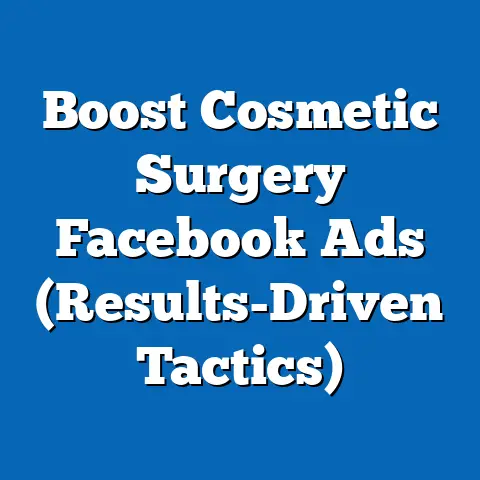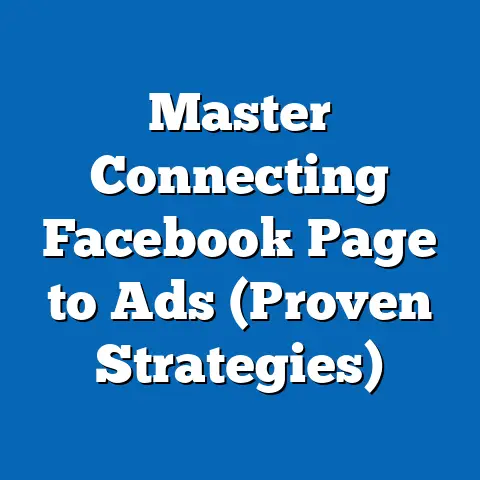Master iOS Update Facebook Ads (Pro Strategies Revealed)
Have you ever wondered how the latest iOS updates are changing the landscape of Facebook advertising? It’s a question I hear constantly from clients and colleagues alike. What if I told you that mastering these changes could mean the difference between skyrocketing your ad performance and watching your campaign flounder? It’s not an exaggeration. The impact has been significant, and understanding how to navigate this new terrain is crucial for success.
The introduction of iOS updates, particularly those focusing on user privacy, has fundamentally altered the way Facebook advertising operates. We’ve seen limitations on data tracking, reduced retargeting capabilities, and a general shift in how we measure campaign performance. These changes have presented significant challenges for marketers who rely on Facebook to reach their target audiences.
I’ve personally witnessed the struggles and successes of businesses navigating these changes, and I’m excited to share my insights and experiences with you. Whether you’re a seasoned marketer or just starting out, this guide will provide you with actionable strategies to master iOS update Facebook ads and achieve your advertising goals.
Section 1: Understanding the iOS Update and Its Impact on Advertising
The iOS update that sent ripples (or perhaps tidal waves) through the advertising world primarily revolves around Apple’s App Tracking Transparency (ATT) framework. This framework requires apps to obtain explicit permission from users before tracking their activity across other apps and websites. In simpler terms, users now see a pop-up asking if they allow the app to track them.
This may seem like a minor change, but its impact on Facebook advertising has been profound. Before ATT, Facebook could track user behavior across the web and apps without explicit consent, allowing for highly targeted advertising. Now, with many users opting out of tracking (industry estimates often place the opt-out rate above 60%, sometimes even higher depending on the demographic), Facebook’s ability to gather data and deliver personalized ads has been significantly hampered.
The Specifics of the iOS Update and Privacy Changes
Let’s break down the core elements of the iOS update and how they directly impact Facebook advertising:
- App Tracking Transparency (ATT): This is the cornerstone of the update. It forces apps to ask for permission to track users across other apps and websites. The default is now “do not track,” meaning users must actively choose to allow tracking.
- Limited Data Collection: With fewer users opting in to tracking, Facebook has access to less data about user behavior. This impacts everything from audience targeting to conversion tracking.
- Aggregated Event Measurement: Facebook introduced Aggregated Event Measurement (AEM) to help advertisers measure campaign performance in a privacy-safe way. AEM prioritizes certain conversion events and limits the amount of data that can be tracked.
- Delayed Reporting: The iOS update can lead to delayed reporting of conversion data. This makes it harder to assess campaign performance in real-time and make timely optimizations.
- Impact on Retargeting: Retargeting campaigns, which rely on tracking users who have previously interacted with your website or app, are particularly affected. With fewer users being tracked, the size of retargeting audiences shrinks, and the effectiveness of these campaigns can decline.
The Challenges Advertisers Face
The iOS update has presented a multitude of challenges for Facebook advertisers:
- Reduced Tracking Accuracy: The most obvious challenge is the decrease in tracking accuracy. With fewer users being tracked, it’s harder to attribute conversions to specific ads and campaigns. This makes it difficult to measure ROI and optimize ad spend effectively.
- Limitations on Retargeting: As mentioned earlier, retargeting campaigns have been significantly impacted. The reduced size of retargeting audiences can lead to higher costs and lower conversion rates.
- Difficulty in Audience Targeting: Facebook’s ability to create highly targeted audiences based on user interests and behaviors has been compromised. This makes it harder to reach the right people with your ads.
- Attribution Challenges: Accurately attributing conversions to specific ads and campaigns has become more challenging. This makes it difficult to understand which ads are driving the most value.
- Increased Cost Per Acquisition (CPA): The combination of reduced tracking accuracy, limitations on retargeting, and difficulty in audience targeting can lead to higher CPAs.
- Need for New Strategies: Advertisers need to adopt new strategies and techniques to overcome these challenges and continue to achieve their advertising goals.
The Importance of Understanding These Impacts
Understanding the specific impacts of the iOS update is crucial for creating effective ad strategies. Without a clear understanding of the challenges, you’ll be flying blind, making decisions based on incomplete or inaccurate data.
Here’s why it’s so important:
- Informed Decision-Making: A thorough understanding of the impacts allows you to make informed decisions about your ad spend, targeting, and creative strategies.
- Realistic Expectations: Knowing the limitations of data tracking helps you set realistic expectations for campaign performance.
- Effective Optimization: Understanding the challenges allows you to focus your optimization efforts on the areas that will have the biggest impact.
- Competitive Advantage: By adapting to the changes and implementing new strategies, you can gain a competitive advantage over advertisers who are slow to react.
- Long-Term Success: In the long run, understanding the impacts of the iOS update will help you build a more sustainable and resilient Facebook advertising strategy.
Takeaway: The iOS update has fundamentally changed the landscape of Facebook advertising. Understanding the specifics of the update and its impact on data tracking, retargeting, and audience targeting is crucial for creating effective ad strategies.
Next Steps: Familiarize yourself with the specific challenges and limitations imposed by the iOS update. Analyze your existing campaigns to identify areas where you may be impacted.
Section 2: Adapting to Change
The iOS update didn’t just require a change in tactics; it demanded a fundamental shift in mindset. The days of relying solely on granular data and precise targeting are gone, or at least significantly diminished. The key to success now lies in adaptability, creativity, and a willingness to embrace new approaches.
The Mindset Shift Advertisers Need to Adopt
The first step in adapting to the iOS update is to change your perspective. Here’s what that mindset shift entails:
- Embrace Uncertainty: Accept that you’ll have less data to work with and that results may be less predictable.
- Focus on the Big Picture: Shift your focus from micro-level data to macro-level trends.
- Prioritize Quality over Quantity: Focus on creating high-quality ads that resonate with your target audience, rather than relying on sheer volume to drive results.
- Be Flexible and Agile: Be prepared to adapt your strategies quickly based on performance data and changing circumstances.
- Think Long-Term: Focus on building a sustainable brand and cultivating relationships with your customers, rather than chasing short-term gains.
I’ve seen many advertisers initially panic after the iOS updates. They were so used to relying on detailed data that the uncertainty felt paralyzing. However, the most successful advertisers were those who embraced the challenge and saw it as an opportunity to innovate.
Prioritizing First-Party Data
In the post-iOS update world, first-party data is more valuable than ever. First-party data is the information you collect directly from your customers, such as their email addresses, purchase history, and website activity. This data is not subject to the same privacy restrictions as third-party data, making it a powerful tool for targeting and personalization.
Here’s how to prioritize first-party data:
- Collect Email Addresses: Encourage website visitors and social media followers to sign up for your email list. Offer incentives like discounts, free content, or exclusive access.
- Implement Customer Relationship Management (CRM) Systems: Use a CRM system to track customer interactions and gather valuable data about their preferences and behaviors.
- Analyze Website Activity: Use tools like Google Analytics to track how users interact with your website. Pay attention to the pages they visit, the products they view, and the actions they take.
- Run Surveys and Polls: Ask your customers directly about their needs, preferences, and opinions.
- Create Loyalty Programs: Reward your most loyal customers with exclusive benefits and offers.
Collecting first-party data ethically and effectively is crucial. Transparency is key. Always be upfront with your customers about how you’re collecting and using their data. Provide them with clear opt-in and opt-out options. And above all, respect their privacy.
Contextual Marketing: An Alternative Strategy
Contextual marketing is a strategy that focuses on delivering ads that are relevant to the context in which they are viewed. Instead of relying on user data, contextual marketing uses factors like the website content, the user’s location, and the time of day to determine which ads to show.
Here’s how contextual marketing works:
- Privacy-Safe: It doesn’t rely on tracking user data, making it a privacy-safe alternative to traditional targeting methods.
- Highly Relevant: It delivers ads that are highly relevant to the context in which they are viewed, increasing the likelihood of engagement.
- Cost-Effective: It can be more cost-effective than traditional targeting methods, as you’re not paying to target users who may not be interested in your products or services.
Takeaway: Adapting to the iOS update requires a mindset shift, a focus on first-party data, and the exploration of alternative strategies like contextual marketing.
Next Steps: Start collecting first-party data from your customers. Explore contextual marketing opportunities in your industry.
Section 3: Leveraging Facebook’s New Tools and Features
Facebook hasn’t remained idle in the face of the iOS updates. They’ve rolled out a range of new tools and features designed to help advertisers navigate the changing landscape. Understanding and leveraging these tools is essential for maintaining effective Facebook ad campaigns.
Overview of New Tools and Features
Here are some of the key tools and features that Facebook has introduced in response to the iOS changes:
- Aggregated Event Measurement (AEM): As mentioned earlier, AEM is a protocol that allows advertisers to measure website conversion events in a privacy-safe way. It prioritizes certain conversion events and limits the amount of data that can be tracked.
- Conversion Modeling: Facebook uses conversion modeling to estimate the conversions that are not directly attributed to ads due to the iOS update. This helps advertisers get a more complete picture of campaign performance.
- Privacy-Enhancing Technologies (PETs): Facebook is investing in PETs to enable privacy-safe data analysis and targeting. These technologies allow advertisers to analyze data without revealing individual user information.
- Facebook Conversions API: The Conversions API allows advertisers to send conversion data directly from their servers to Facebook, bypassing the limitations of browser-based tracking.
- Collaborative Ads: Collaborative Ads allow brands to partner with retailers to run ads that promote their products on the retailer’s website. This can be a more effective way to reach customers than traditional advertising methods.
Utilizing These Tools for Optimization
Let’s delve into how you can effectively utilize these tools to optimize your ad targeting and measurement:
- Implementing Aggregated Event Measurement:
- Verify Your Domain: The first step is to verify your domain in Facebook Business Manager.
- Configure Web Events: Prioritize and configure your web events in the Events Manager. Facebook allows you to configure up to eight conversion events per domain. Choose the events that are most important for your business, such as purchases, leads, or add-to-carts.
- Understand Event Prioritization: Facebook prioritizes events based on their position in the funnel. For example, a purchase event is typically prioritized over a view content event. This means that if a user triggers multiple events, only the highest-priority event will be recorded.
- Leveraging Conversion Modeling:
- Understand the Limitations: While conversion modeling can help fill in the gaps in your data, it’s important to understand its limitations. Conversion modeling is an estimate, not a precise measurement.
- Use Conversion Modeling as a Guide: Use conversion modeling as a guide for making optimization decisions, but don’t rely on it blindly.
- Track Performance Over Time: Track your campaign performance over time to see how conversion modeling is impacting your results.
- Implementing Facebook Conversions API:
- Work with a Developer: Implementing the Conversions API requires technical expertise. You’ll need to work with a developer to set up the API connection between your server and Facebook.
- Send High-Quality Data: The more accurate and complete your data, the better the results you’ll get from the Conversions API.
- Match Customer Data: Use customer data matching to improve the accuracy of your conversion tracking. This involves sending hashed customer information, such as email addresses and phone numbers, to Facebook.
- Exploring Collaborative Ads:
- Identify Potential Partners: Identify retailers who sell your products and who have a strong online presence.
- Negotiate Terms: Negotiate the terms of your collaborative ad campaign with the retailer. This includes the ad budget, the targeting criteria, and the revenue sharing agreement.
- Create Compelling Ads: Work with the retailer to create compelling ads that showcase your products and drive sales.
- Verify Your Domain: The first step is to verify your domain in Facebook Business Manager.
- Configure Web Events: Prioritize and configure your web events in the Events Manager. Facebook allows you to configure up to eight conversion events per domain. Choose the events that are most important for your business, such as purchases, leads, or add-to-carts.
- Understand Event Prioritization: Facebook prioritizes events based on their position in the funnel. For example, a purchase event is typically prioritized over a view content event. This means that if a user triggers multiple events, only the highest-priority event will be recorded.
- Understand the Limitations: While conversion modeling can help fill in the gaps in your data, it’s important to understand its limitations. Conversion modeling is an estimate, not a precise measurement.
- Use Conversion Modeling as a Guide: Use conversion modeling as a guide for making optimization decisions, but don’t rely on it blindly.
- Track Performance Over Time: Track your campaign performance over time to see how conversion modeling is impacting your results.
- Work with a Developer: Implementing the Conversions API requires technical expertise. You’ll need to work with a developer to set up the API connection between your server and Facebook.
- Send High-Quality Data: The more accurate and complete your data, the better the results you’ll get from the Conversions API.
- Match Customer Data: Use customer data matching to improve the accuracy of your conversion tracking. This involves sending hashed customer information, such as email addresses and phone numbers, to Facebook.
- Identify Potential Partners: Identify retailers who sell your products and who have a strong online presence.
- Negotiate Terms: Negotiate the terms of your collaborative ad campaign with the retailer. This includes the ad budget, the targeting criteria, and the revenue sharing agreement.
- Create Compelling Ads: Work with the retailer to create compelling ads that showcase your products and drive sales.
Case Studies: Successful Campaigns Using New Features
Let’s look at some examples of brands that have successfully implemented these new features:
- Example 1: E-commerce Brand Using AEM and Conversions API: An e-commerce brand that sells clothing implemented AEM and the Conversions API. By prioritizing their purchase event and sending high-quality data through the Conversions API, they were able to improve the accuracy of their conversion tracking and optimize their ad spend more effectively. They saw a 15% increase in attributed purchases and a 10% decrease in CPA.
- Example 2: Lead Generation Company Using Conversion Modeling: A lead generation company that provides services to small businesses used conversion modeling to estimate the leads that were not directly attributed to their ads due to the iOS update. By using conversion modeling as a guide, they were able to identify the campaigns that were driving the most value and allocate their ad spend more effectively. They saw a 12% increase in leads and an 8% decrease in CPA.
- Example 3: Consumer Goods Brand Using Collaborative Ads: A consumer goods brand that sells household products partnered with a major retailer to run collaborative ads. By promoting their products on the retailer’s website, they were able to reach a wider audience and drive sales. They saw a 20% increase in sales and a 15% increase in brand awareness.
Takeaway: Facebook has released new tools and features to help advertisers navigate the challenges of the iOS update. Understanding and leveraging these tools is crucial for maintaining effective Facebook ad campaigns.
Next Steps: Implement Aggregated Event Measurement, explore the Facebook Conversions API, and consider using Collaborative Ads.
Section 4: Creative Strategies for Engagement
In a landscape where data is less readily available, creativity becomes even more crucial. Capturing attention and driving engagement through compelling ad content is paramount to success. This section explores innovative ad formats and storytelling techniques that resonate well with users in the post-iOS update era.
The Importance of Creativity in Facebook Ads
Creativity is no longer just a nice-to-have; it’s a necessity. With less data to rely on for targeting, your ads need to work harder to capture attention and drive engagement. A compelling ad can cut through the noise and connect with your target audience on an emotional level.
Here’s why creativity is so important:
- Captures Attention: A creative ad stands out from the crowd and grabs the user’s attention.
- Drives Engagement: A creative ad encourages users to interact with your brand, whether it’s through likes, comments, shares, or clicks.
- Builds Brand Awareness: A creative ad helps to build brand awareness and recognition.
- Differentiates Your Brand: A creative ad helps to differentiate your brand from the competition.
- Increases ROI: A creative ad can increase your ROI by driving more conversions and reducing your CPA.
I’ve personally seen campaigns that were initially struggling turn around completely simply by injecting more creativity into the ad content. It’s about finding that unique angle, that unexpected visual, that message that truly resonates with your audience.
Innovative Ad Formats and Storytelling Techniques
Here are some innovative ad formats and storytelling techniques that can help you capture attention and drive engagement:
- Interactive Ads: Interactive ads allow users to interact with your ad directly. This can include quizzes, polls, games, or augmented reality experiences.
- Video Ads: Video ads are a powerful way to tell your brand’s story and connect with your audience on an emotional level.
- Carousel Ads: Carousel ads allow you to showcase multiple products or services in a single ad.
- Collection Ads: Collection ads are designed to drive sales by showcasing your products in a visually appealing way.
- Instant Experiences: Instant Experiences are full-screen, mobile-optimized experiences that load instantly when a user clicks on your ad.
- User-Generated Content (UGC): Incorporating UGC into your ads can build trust and credibility.
- Storytelling: Tell a compelling story that resonates with your target audience.
- Humor: Use humor to capture attention and make your brand more relatable.
- Emotional Appeals: Tap into your audience’s emotions by using heartwarming, inspiring, or thought-provoking content.
Examples and Case Studies
Let’s look at some examples of brands that have successfully implemented creative strategies:
- Example 1: Interactive Quiz Ad: A fitness brand ran an interactive quiz ad that asked users about their fitness goals and preferences. Based on their responses, the quiz recommended personalized workout plans and products. The ad generated a high level of engagement and drove a significant number of leads.
- Example 2: Video Ad with User-Generated Content: A travel company created a video ad that featured user-generated content from travelers who had visited their destinations. The ad built trust and credibility and inspired others to book trips.
- Example 3: Carousel Ad Showcasing Multiple Products: A fashion brand ran a carousel ad that showcased multiple products from their new collection. The ad allowed users to browse through the collection and click on the products they were interested in.
- Example 4: Instant Experience Ad with a Compelling Story: A non-profit organization created an Instant Experience ad that told the story of a person who had been helped by their organization. The ad was emotionally compelling and inspired users to donate.
Takeaway: Creativity is essential for success in the post-iOS update world. Experiment with innovative ad formats and storytelling techniques to capture attention and drive engagement.
Next Steps: Brainstorm creative ad concepts that align with your brand and target audience. Explore different ad formats and storytelling techniques.
Section 5: Measuring Success in a New Era
The metrics we used to rely on have shifted in importance. Tracking website conversions is more challenging, and traditional KPIs like cost per click (CPC) and click-through rate (CTR) may not tell the whole story. This section explores new metrics and KPIs that are important to track and how to adjust your analytics approach.
New Metrics and KPIs to Track
Here are some new metrics and KPIs that are important to track:
- Incrementality: Incrementality measures the incremental impact of your ads on sales or other business outcomes. This is a more accurate way to measure the effectiveness of your ads than traditional metrics like CPC and CTR.
- Brand Lift: Brand lift measures the impact of your ads on brand awareness, brand perception, and purchase intent.
- Return on Ad Spend (ROAS): ROAS measures the revenue generated for every dollar spent on advertising.
- Customer Lifetime Value (CLTV): CLTV measures the total revenue a customer is expected to generate over their lifetime.
- Engagement Rate: Engagement rate measures the percentage of users who interact with your ads, whether it’s through likes, comments, shares, or clicks.
- Reach and Frequency: Reach measures the number of unique users who see your ads, while frequency measures the average number of times a user sees your ads.
- First-Party Data Metrics: Track the growth of your email list, the engagement of your email subscribers, and the conversion rates of your email campaigns.
Adjusting Your Analytics Approach
Here’s how to adjust your analytics approach to glean insights from available data:
- Focus on Macro-Level Trends: Instead of focusing on micro-level data, focus on macro-level trends. Look at the overall performance of your campaigns over time and identify patterns.
- Use A/B Testing: A/B testing is a powerful way to test different ad concepts and strategies. Use A/B testing to optimize your ads for engagement and conversions.
- Track Incrementality: Use incrementality testing to measure the incremental impact of your ads on sales or other business outcomes.
- Use Brand Lift Studies: Use brand lift studies to measure the impact of your ads on brand awareness, brand perception, and purchase intent.
- Integrate Data from Multiple Sources: Integrate data from multiple sources, such as your website analytics, your CRM system, and your Facebook ad account, to get a more complete picture of your customer journey.
- Use Attribution Modeling: Use attribution modeling to understand how different touchpoints contribute to conversions.
Strategies for A/B Testing and Optimization
Here are some strategies for A/B testing and optimizing campaigns:
- Test Different Ad Concepts: Test different ad concepts to see which ones resonate best with your target audience.
- Test Different Ad Formats: Test different ad formats to see which ones drive the most engagement and conversions.
- Test Different Targeting Options: Test different targeting options to see which ones reach the most relevant audience.
- Test Different Bidding Strategies: Test different bidding strategies to see which ones maximize your ROI.
- Test Different Landing Pages: Test different landing pages to see which ones convert the most visitors.
- Continuously Monitor and Optimize: Continuously monitor your campaign performance and make adjustments as needed.
Takeaway: Measuring success in the new era requires tracking new metrics and KPIs and adjusting your analytics approach.
Next Steps: Implement incrementality testing, conduct brand lift studies, and integrate data from multiple sources.
Conclusion
The iOS update has undoubtedly presented challenges for Facebook advertisers. Reduced tracking accuracy, limitations on retargeting, and difficulty in audience targeting have forced marketers to adapt and innovate. But as I’ve shown you, these challenges also present opportunities. By understanding the impacts of the iOS update, adopting a new mindset, leveraging Facebook’s new tools and features, embracing creative strategies, and adjusting your measurement approach, you can master iOS update Facebook ads and achieve your advertising goals.
The key takeaway is adaptability. The advertising landscape is constantly evolving, and those who are willing to adapt and experiment will be the ones who succeed. Don’t be afraid to try new things, to test different strategies, and to learn from your mistakes.
I encourage you to implement the strategies discussed in this article and share your experiences in adapting to the new Facebook advertising landscape. Your insights can help others navigate these changes and achieve their own advertising goals. The world of Facebook ads is constantly changing, but with the right strategies and a willingness to learn, you can continue to thrive. Now, go out there and conquer the new Facebook advertising landscape!






